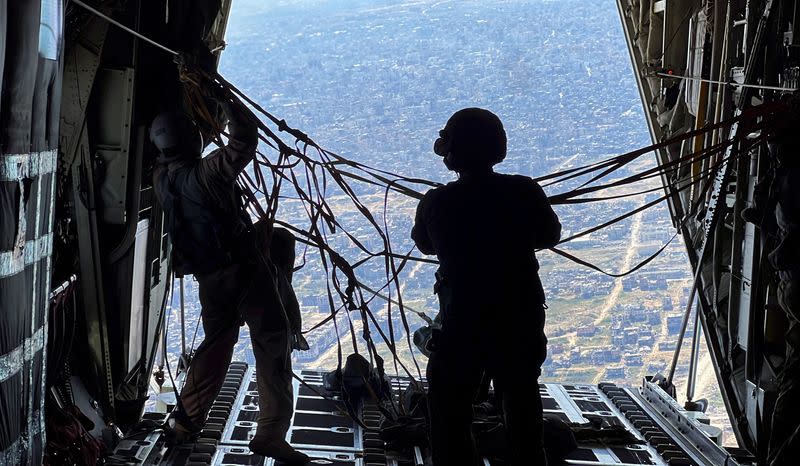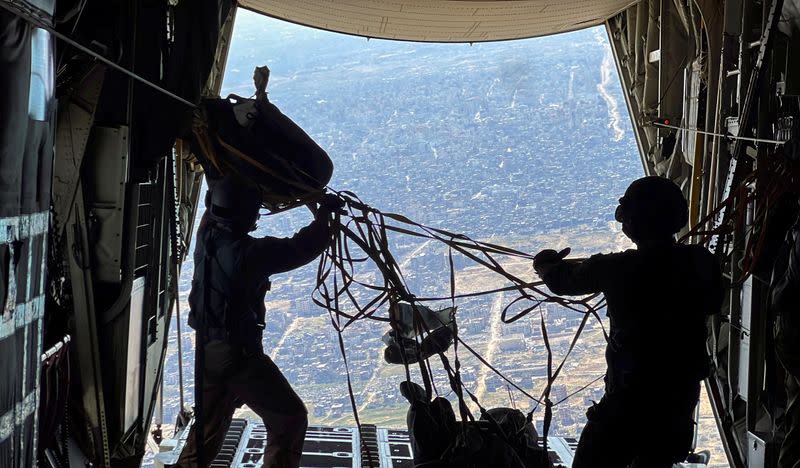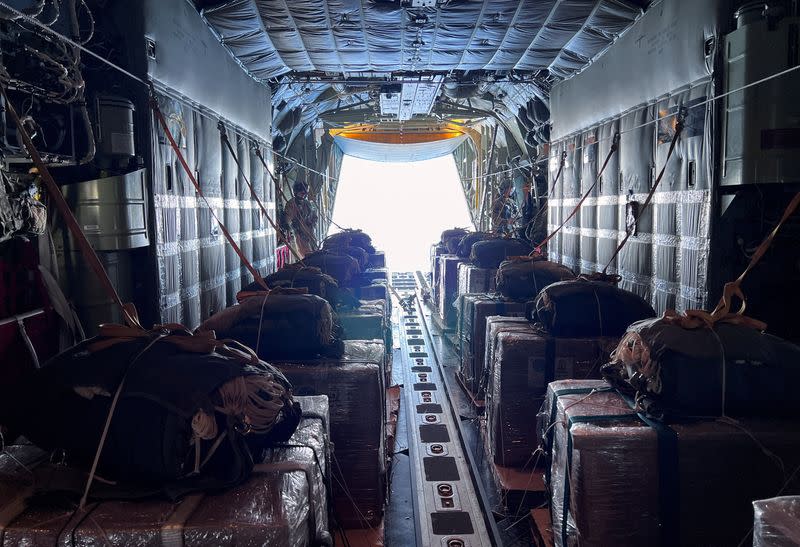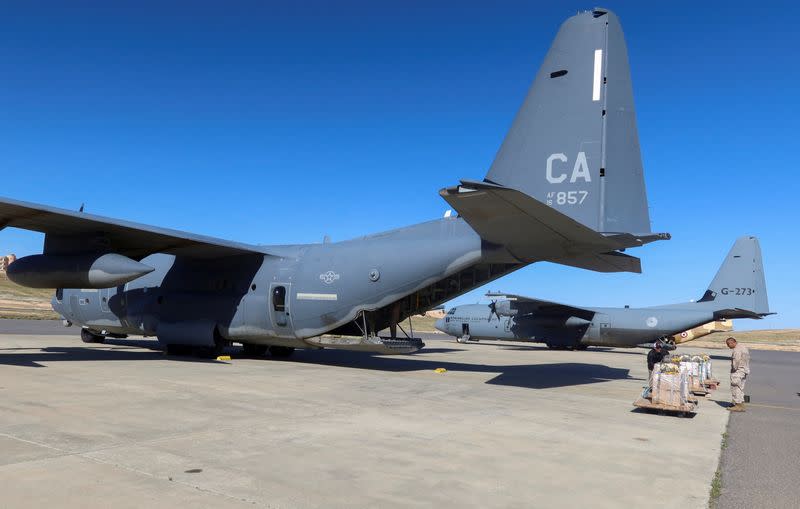View from US military aid flight shows Gaza desolation
By Suleiman Al-Khalidi
OVER GAZA (Reuters) -As a U.S. Air Force C-130 aircraft flew over the Gaza Strip to drop food to people facing famine, there were few visible signs of life in the rubble of what had been a bustling urban jungle before the Israel-Hamas war.
The plane descended to 3,000 feet over the Mediterranean Sea and northern Gaza. The crew cut ropes on aid pallets packed in Jordan and released a dozen large bundles with parachutes from the C-130's open rear doors.
The view of Gaza from above revealed many flattened buildings, others in stages of collapsing or entirely turned to charred rubble from an Israeli offensive that started after a Hamas attack on Oct. 7. Plumes of smoke rose from the ruins.
The U.S. military said it had dropped over 27,000 "meal equivalents" and nearly 26,000 bottles of water on Tuesday into north Gaza, where aid agencies say the needs are greatest.
It meets just a fraction of the immense needs of 2.3 million Palestinians in the Gaza Strip, where the United Nations says at least 576,000 people are one step away from famine conditions.
The drop was smaller than the first U.S. air drop of 38,000 meals on March 3, and brought the total weight air-dropped by the U.S. military in cooperation with Western and Arab countries this month to 1 million pounds.
Aid groups say air drops are far less effective than deliveries by truck, and it is nearly impossible to ensure airdropped supplies are distributed to those most in need.
"Food and other emergency aid that comes into Gaza, as we all know, is desperately needed. There is no question about it," Jens Laerke, spokesperson for the Unites Nations' aid coordination body, said on Tuesday.
"What's important for us to stress again and again - and sorry if I sound like a broken record - but it's not a substitute for the overland transport of food and other emergency aid into Gaza and particularly northern Gaza. It cannot make up for that," he said.
Aid agencies and governments are trying to increase the flow of food and other vital supplies to Gaza via road and sea because air drops are expensive and limited in capacity.
The White House is pressing Israel to allow greater access for aid operations by land. Israel denies restricting humanitarian aid and says poor U.N. management of distribution is to blame.
Before the conflict began in October, Gaza relied on 500 trucks entering daily. Aid can currently only be delivered by land into southern Gaza via the Rafah crossing from Egypt and Kerem Shalom crossing from Israel.
According to Gaza health authorities, more than 31,000 people have been killed. A United Nations analysis of satellite imagery found 30% of buildings have been destroyed or damaged in the Palestinian enclave of 2.3 million people. Many roads have been bulldozed and are impassable.
The war began after Hamas fighters attacked Israel on Oct. 7, killing 1,200 people and seizing 253 hostages, according to Israeli tallies. Israel retaliated with an air and ground assault.
(Reporting by Suleiman Al-Khalidi; Additional reporting by Jehad Abu Shelbak, Maya Gebeily in Beirut and Gabrielle Tetrault-Farber in Geneva; Editing by Cynthia Osterman and Alison Williams)





